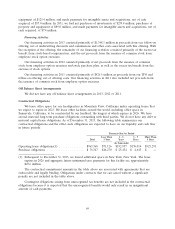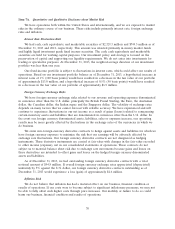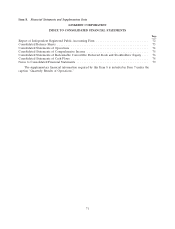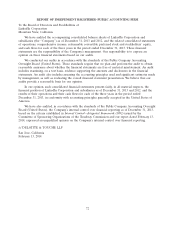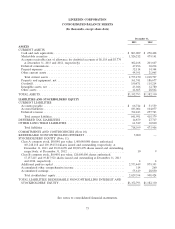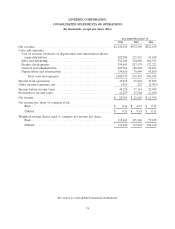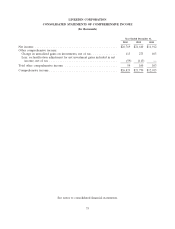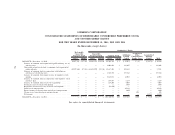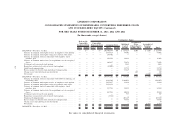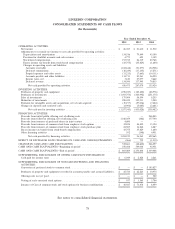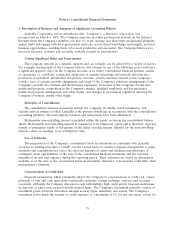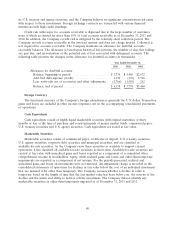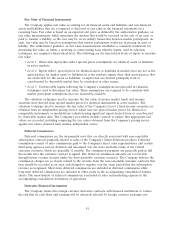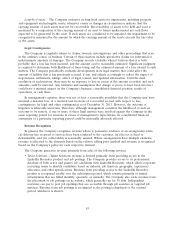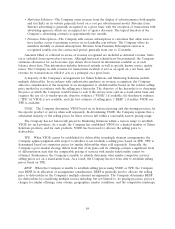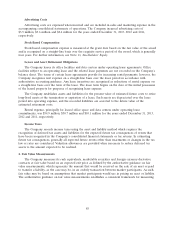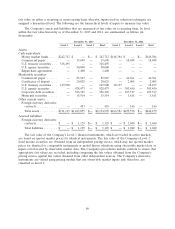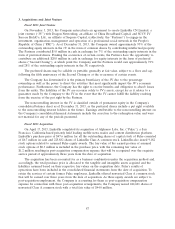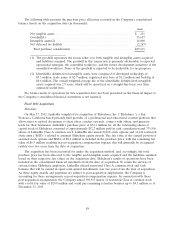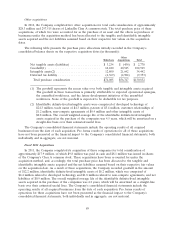LinkedIn 2013 Annual Report Download - page 81
Download and view the complete annual report
Please find page 81 of the 2013 LinkedIn annual report below. You can navigate through the pages in the report by either clicking on the pages listed below, or by using the keyword search tool below to find specific information within the annual report.Notes to Consolidated Financial Statements
1. Description of Business and Summary of Significant Accounting Policies
LinkedIn Corporation and its subsidiaries (the ‘‘Company’’), a Delaware corporation, was
incorporated on March 6, 2003. The Company operates an online professional network on the Internet
through which the Company’s members are able to create, manage and share their professional identities
online, build and engage with their professional networks, access shared knowledge and insights, and find
business opportunities, enabling them to be more productive and successful. The Company believes it is
the most extensive, accurate and accessible network focused on professionals.
Certain Significant Risks and Uncertainties
The Company operates in a dynamic industry and, accordingly, can be affected by a variety of factors.
For example, management of the Company believes that changes in any of the following areas could have
a significant negative effect on the Company in terms of its future consolidated financial position, results
of operations, or cash flows: scaling and adaptation of existing technology and network infrastructure;
protection of customers’ information and privacy concerns; security measures related to the Company’s
website; rates of revenue growth; engagement and usage of the Company’s solutions; management of the
Company’s growth; new markets and international expansion; protection of the Company’s brand and
intellectual property; competition in the Company’s market; qualified employees and key personnel;
intellectual property infringement and other claims; and changes in government regulation affecting the
Company’s business, among other things.
Principles of Consolidation
The consolidated financial statements include the Company, its wholly-owned subsidiaries, and
variable interest entities in which LinkedIn is the primary beneficiary in accordance with the consolidation
accounting guidance. All intercompany balances and transactions have been eliminated.
Redeemable noncontrolling interest is included within the equity section in the consolidated balance
sheets. Redeemable noncontrolling interest is considered to be temporary equity and is therefore reported
outside of permanent equity at the greater of the initial carrying amount adjusted for the noncontrolling
interest’s share of earnings, or its redemption value.
Use of Estimates
The preparation of the Company’s consolidated financial statements in conformity with generally
accepted accounting principles (‘‘GAAP’’) in the United States of America requires management to make
estimates and assumptions that affect the reported amounts of assets and liabilities and disclosure of
contingent assets and liabilities at the date of the consolidated financial statements and the reported
amounts of income and expenses during the reporting period. These estimates are based on information
available as of the date of the consolidated financial statements; therefore, actual results could differ from
management’s estimates.
Concentrations of Credit Risk
Financial instruments, which potentially subject the Company to concentrations of credit risk, consist
primarily of cash and cash equivalents, marketable securities, foreign exchange contracts and accounts
receivable. Although the Company deposits its cash with multiple high credit quality financial institutions,
its deposits, at times, may exceed federally insured limits. The Company’s investment portfolio consists of
investment grade securities diversified amongst security types, industries, and issuers. The Company’s
investment policy limits the amount of credit exposure to a maximum of 5% for any one issuer, except for
79


